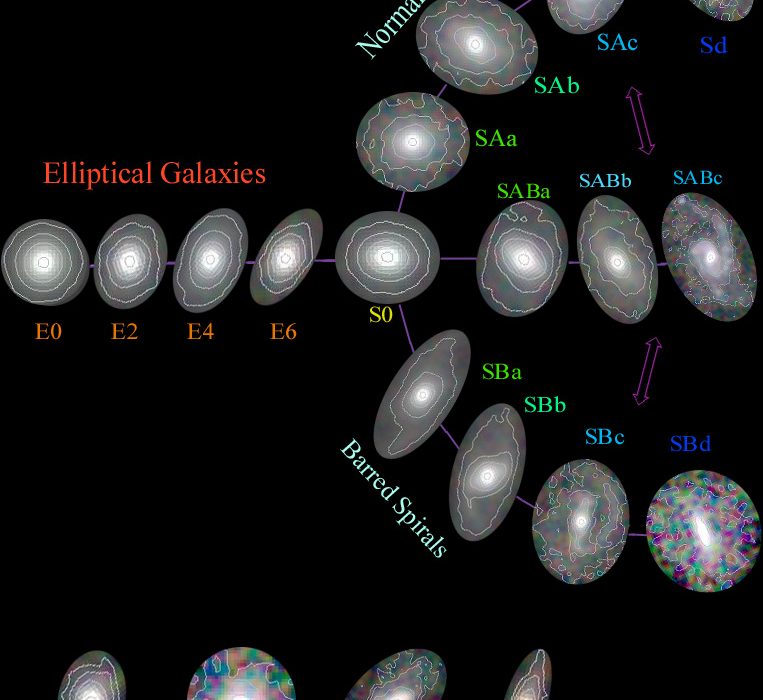Hubble just dropped more galactic delights for the eyes!
From its vantage point in low Earth orbit, the Hubble Space Telescope I recently captured an intricate portrait of the galaxy NGC 3430, a classic spiral galaxy located 100 million light-years away. Land In the constellation Leo Minor.
The galaxy itself is a stunning swirl of gas and dust sculpted into dense lanes that spiral around its center. The bright blue patches scattered among these arms show regions where New stars are formingThe orange spots seen at the top and bottom of the image show distant background galaxies behind NGC 3430.
Just outside the Main structure of the galaxy There are other neighboring galaxies beyond the frame of this image. One of them, in fact, is close enough that its gravitational influence has caused some of the star formation Within NGC 3430, a recent NASA Statement saying.
Related: Hubble Space Telescope discovers closest massive black hole to Earth: a cosmic clue frozen in time
Both NGC 3430 and the Milky Way are spiral galaxiesBut our home galaxy has something that sets it apart. The Milky Way is a barred spiral galaxya classification that refers to the dense, oval structure of old stars that pass through the heart of our galaxy.
NGC 3430, on the other hand, has transformed into a “classical” or “normal” spiral galaxy, lacking a dense central bar of old stars but still possessing clear, distinctive spiral arms.
Classical spiral galaxies, barred spiral galaxies and other types of lenticular, elliptical and irregular galaxy shapes date back to the early twentieth century, when the study of galaxies It was still in its infancy.
The distinctive shape of NGC 3430 may even have inspired astronomers Edwin Hubble In a 1916 paper, the astronomer grouped about 400 galaxies according to their appearance: spirals, barred spirals, lenticulars, ellipticals or irregulars, a simple topology that formed the basis of the modern schemes used today.
Other study In the late 1990s it was discovered that NGC 3430 shows clear signs of tidal interactions with a neighboring galaxy, NGC 3424.
As Other images sent home by HubbleIt may be hard to imagine that such intricate views of the cosmos can be obtained with a telescope hovering directly overhead. Earth's atmosphere. The flagship POT The space telescope has been operating about 320 miles (515 kilometers) above our planet's surface for three decades since its launch in 1990.
The life of this long-standing telescope was extended last month when NASA moved it to single turn mode After three other gyroscopes, which keep the telescope pointed precisely at one region of the universe for long periods, failed beyond repair. Scientists lost the ability to repair the telescope in 2011 when the telescope crashed. space shuttle he was retired.
Last week, an independent panel of eight experts outlined to NASA three possible ways to… Continue operating Hubble Without prejudice to NASA's planned budget: reducing funding for general observation programs, reducing the number of instrument modes or, in the worst case, eliminating five of the nine instrument modes, including infrared capabilities. The latter could be covered, at least partially, by the planned budget. James Webb Space Telescope.
Once the mission is over, lost instrument modes likely cannot be restored because the mission does not have experts with the relevant experience to do so, according to a recent report. statement by the American Astronomical Society.
This means we must preserve stunning images of the cosmos like this one of NGC 3430 for as long as Hubble, humanity's faithful space telescope, continues to deliver them.
